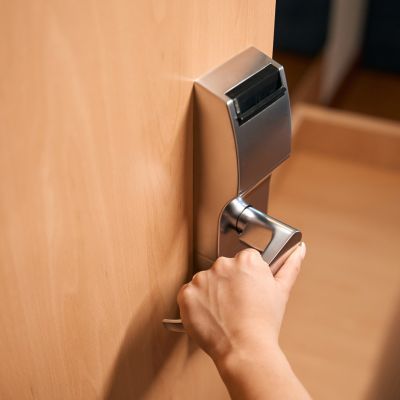Hotel design trends are a dynamic and ever-evolving industry. Navigating trends such as marrying traditional and modern hotel decor mirrors the ever-changing preferences of travelers seeking immersive and memorable experiences.
The fusion design approach, which creates a synergy between the traditional and modern, helps hotels with guest experience enhancement and work on accommodation aesthetics that help in crafting inviting and timeless spaces.
Let us delve deeper into how these design fusions can play out and the new trends in the hotel design landscape.
The Power of Design Fusion
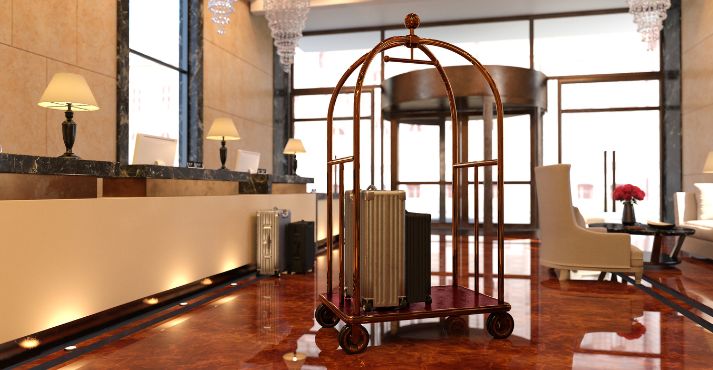
The world of hospitality is constantly evolving, which means it is essential to create experiences that are memorable for guests.
One approach in this realm is creating a fusion of traditional and modern design elements. This can include reviving an old color combination or mixing retro and modern furniture designs.
This blending of the vintage and the new creates a unique experience for guests which captivates them visually. Moreover, this aesthetic diversity allows hotels to appeal to guests with varying preferences while maintaining an overall theme. Let us look at this in more detail.
Aesthetic Diversity
As discussed earlier, aesthetic diversity combines traditional and modern design elements.
Traditional hotel design is about timeless elegance, rich textures, and elaborate details. On the other hand, a modern design aesthetic places emphasis on minimalism and the usage of innovative materials.
Aesthetic diversity is about elevating hospitality with traditional-modern design fusion, ultimately catering to varying guest preferences.
For example, a hotel lobby could have a modern desk with a big chandelier for a more traditional look to give a good first impression to incoming guests.
Coherent Design Approach
In order to execute the fusion between different eras of elements, hotels must adopt a coherent design approach. It is important to have both the traditional and modern elements in a seamless way so that the atmosphere is not jarring. How would that work?
You can do this by paying extra attention to furniture choices, color palettes, and other architectural elements. Through a well-thought-out plan, a cohesive and engaging space can be created where guests feel a part of the entire explanation.
Fusion Elegance
The appeal of blending traditional and modern design is in its capacity to produce an elegant and inviting setting.
In addition to enjoying the comfort and usefulness provided by contemporary design, guests are drawn to the sophistication of classical aspects like antique furniture and classic artwork.
For instance, guest rooms might include traditional four-poster beds with cutting-edge smart lighting systems. A feeling of pampering and well-being is created for guests as a result of the synthesis of elegance and usefulness.
Harmonious Guest Experience
The ultimate goal of combining classic and modern design components is to offer a seamless visitor experience. This design strategy accommodates a range of tastes, whether visitors are looking for a flavor of nostalgia or modern luxury.
While taking advantage of the comforts and conveniences of the present enables visitors to connect with the past. Beyond aesthetics, a positive guest experience affects how visitors feel throughout their stay, increasing their likelihood of returning and recommending the hotel to others.
Setting the Mood: Traditional Elegance
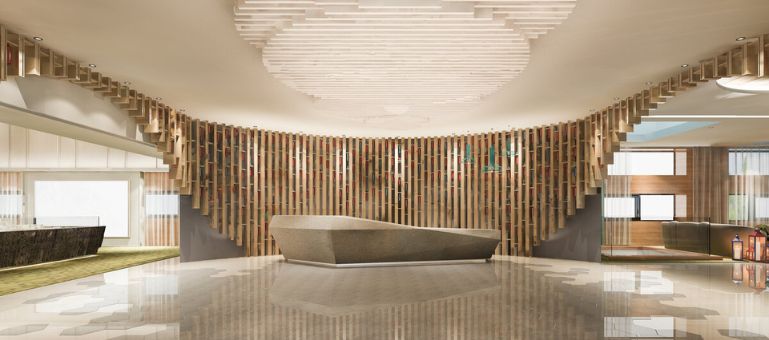
In the era of constant advancements in technology or contemporary design trends, there is a certain charm about embracing timeless elegance in hotel design.
Traditional decor, with its luxurious details and furnishings, has the power to transform a hotel space into a kind of vintage luxury.
Through the incorporation of these various elements, guests can have a unique as well as an enriching experience.
Timeless Decor Appeal
Traditional elegance is alluring because it has the ability to transcend the constantly upcoming trends.
While modern styles come and go, traditional decor is timeless. Lavish furnishings like plush fabrics and rich woodwork that are used to create pieces that tell a story help us get a glimpse into the past while still being relevant in the present.
Heritage Details
Heritage details are at the heart of traditional decor. Every piece of decor, whether it is a carefully carved fireplace or a ceiling mural, has a history that is being carried with it.
Through this carried history comes a sense of nostalgia, making guests feel as though they are part of a rich backstory that spans generations. Moreover, this historical element gives hotels a chance to give homage to the cultural heritage, which again resonates with the guests.
Vintage Luxury
It is important to remember that the concept of luxury has evolved over time; however, the beauty and attraction of vintage luxury remains unmatched.
The traditional decor expresses opulence through rich color palettes and intricate patterns, which come together to help guests get an experience that helps them travel back into an era that paid extra attention to detail, and the quality of elements was the epitome of luxury.
Embracing Modernity: Clean Lines and Functionality
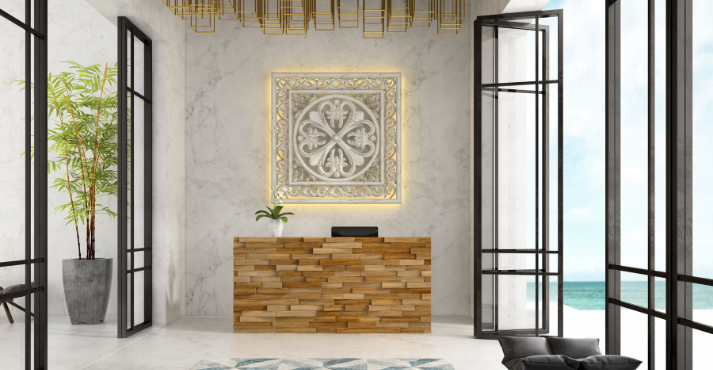
In the world of interior design, modern aesthetics have continued to allure not only designers but also guests.
Characterized by clean lines, minimalism, and a focus on functionality, modern decor has become synonymous with contemporary elegance. This design philosophy transforms hotel spaces into visually appealing environments, enhances efficiency, and provides a sophisticated canvas for unforgettable guest experiences.
Contemporary Decor
Modern design is not just about aesthetics. It is a representation of an innovative mindset. Contemporary design is all about creating a seamless synergy between form and function.
Hotels adopt modern designs dedicated to creating a relevant and engaging space for the modern traveler. This is usually done through clean, uncluttered layouts, sleek furniture, and the creation of open spaces.
These elements create a hospitable environment for the guests and create an aura of freshness.
Efficiency Enhancement
Let us now discuss the most essential strengths of modern design. It is its efficiency which serves to be extremely valuable in enhancing the guest experience.
This is created through streamlined furniture arrangements and intuitive spatial configurations, making the most of available space. This helps in ensuring that guests can move freely and comfortably.
Whether through compact rooms or seamlessly integrated workspaces, the modern design helps optimize every square foot to enhance the guest experience.
Minimalist Elegance
What is the minimalist approach? It is all about embracing the notion that less is considered to be more which helps make a space have a sense of calm and tranquility.
The beauty of modern decor is all about creating elegance through simplicity. What does that mean in the hotel space? It can be understood as transforming rooms into common areas where every element has a purpose.
Through Neutral color palettes and strategic use of textures, hotels can create an environment that encourages relaxation, and this aesthetic clarity helps create an experience that is both comfortable and aesthetically pleasing.
Functionality as Art
In the world of modern design, the line between art and functionality often gets blurred. Hotels will often have statement lighting fixtures that are also used as art installations. Through this example, it is evident that hotels can transform everyday items into visually engaging focal points.
By exploring this modern hotel room design aesthetic, you can add an element of surprise for the guests, helping create a memorable stay.
This approach adds an element of surprise and delight to the guest experience, making each interaction with the environment memorable.
7 Hotel Design Trends for 2023 & Beyond
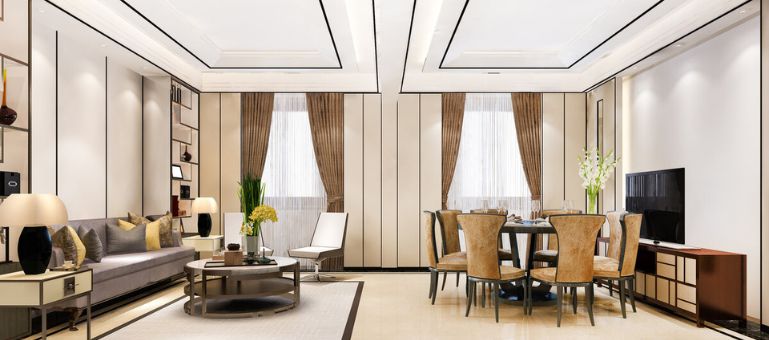
In 2023 and beyond, several key trends are poised to define the landscape of hotel design, focusing on functionality, technology, sustainability, and a sense of community.
1. Functional Lobbies
When it comes to hotels, the lobby area is no longer just a space where guests come to check in to their rooms. Lobbies have become a dynamic hub where guests can socialize, work, and relax.
In current times, hotel lobbies are designed while keeping this flexibility in mind.
Through the use of multi-functional furniture arrangements, work-friendly spaces, and cozy seating nooks to help cater to the different needs of hotel guests.
The lobbies become a vibrant and welcoming environment conducive to social interaction, extending the guest’s experience.
2. Wood and Wood-Look Flooring
It is important to note that the use of wood and wood-look flooring has continuously been gaining popularity in hotel design. Wood brings warmth, texture, and a touch of nature into spaces, creating a cozy and inviting atmosphere.
This trend provides a sense of control by creating a connection between nature and the sense of comfort that comes with the use of wooden materials.
Whether it is through the hardwood floors in rooms or the wood-look tiles in the hotel’s public areas, it helps create a sense of comfort for guests.
3. Tech and Touchless Interaction
Technological advancements are about transforming guest experiences.
With 2023 has come the incorporation of touchless technology for different hotel functions such as checking-in, room control, and even elevator access.
Mobile apps enable guests to manage their stay seamlessly, from booking to checkout. These innovations enhance convenience and address health and safety concerns, creating a more streamlined and hygienic experience.
4. Designing for Minimal Square Footage
Another growing trend in the hotel industry that has been gaining momentum has been the emphasis on sustainability.
Compact yet functional rooms utilize clever storage solutions, multi-purpose furniture, and efficient layouts to maximize space. This trend aligns with the needs of modern travelers seeking convenience and efficiency without sacrificing comfort.
5. Food and Beverage Amenities
In 2023, the food and beverage options being offered at hotels have become extremely integral to the overall hotel experience.
Hotels are continuously expanding their culinary offerings to include on-site cafes and local partnerships. Through this trend, the focus has been set on creating memorable dining experiences for guests and also a reflection of the location’s flavors and culture.
6. Reflecting on the Community’s History
Hotel design elements that reflect the local heritage, usage of artwork from local artists, and telling stories through the architecture also help contribute to a more immersive guest experience which helps guests create a connection to the location.
In conclusion, in order to create a sense of authenticity, hotels have tried to draw inspiration from the history and culture in their surroundings to create a sense of place and comfort for their guests.
7. Sustainable Choices
While one may think that sustainability is a growing trend, it is also essential to remember that it has become more of a necessity.
Hotels are trying to incorporate eco-friendly practices as well as materials into their design elements. This can be done through energy-efficient lighting and water-saving fixtures to use recycled and locally sourced materials.
As hotels aim to minimize their environmental footprint, green roofs, solar panels, and waste reduction initiatives are also becoming standard practices.
Conclusion
In conclusion, captivating guests with Hotel Design Trends is an art form. By cleverly integrating time-honored elegance and contemporary innovation, hotels can create spaces that stand the test of time while elevating the guest experience.
The captivating blend of old and new forms an ambiance that resonates with guests’ emotions, inviting them to immerse themselves in an unforgettable journey of comfort, style, and discovery.

